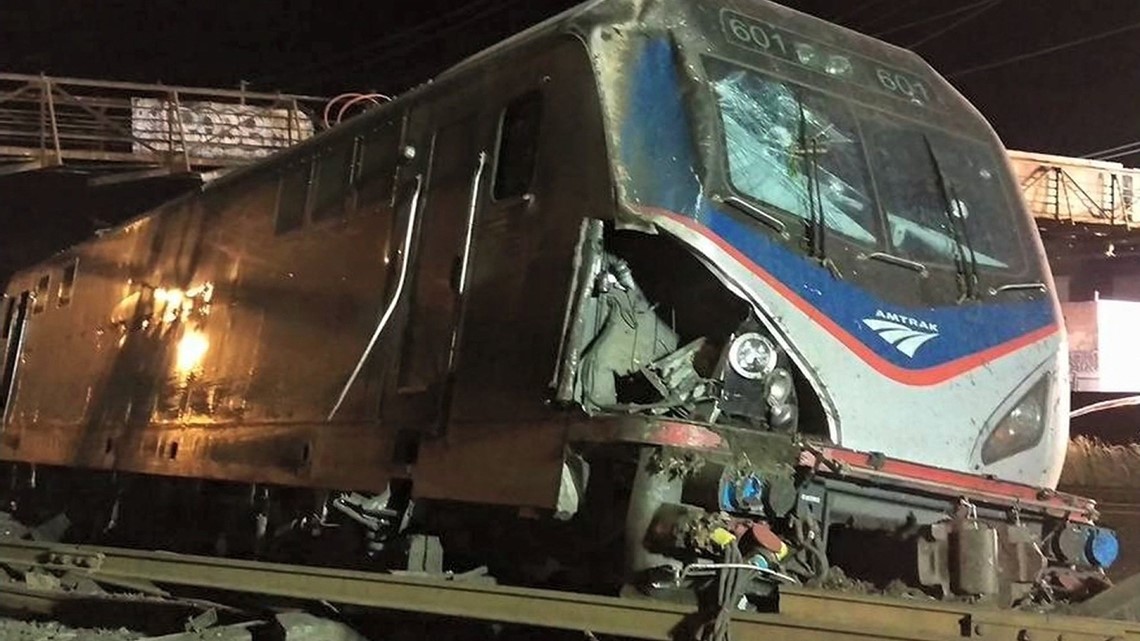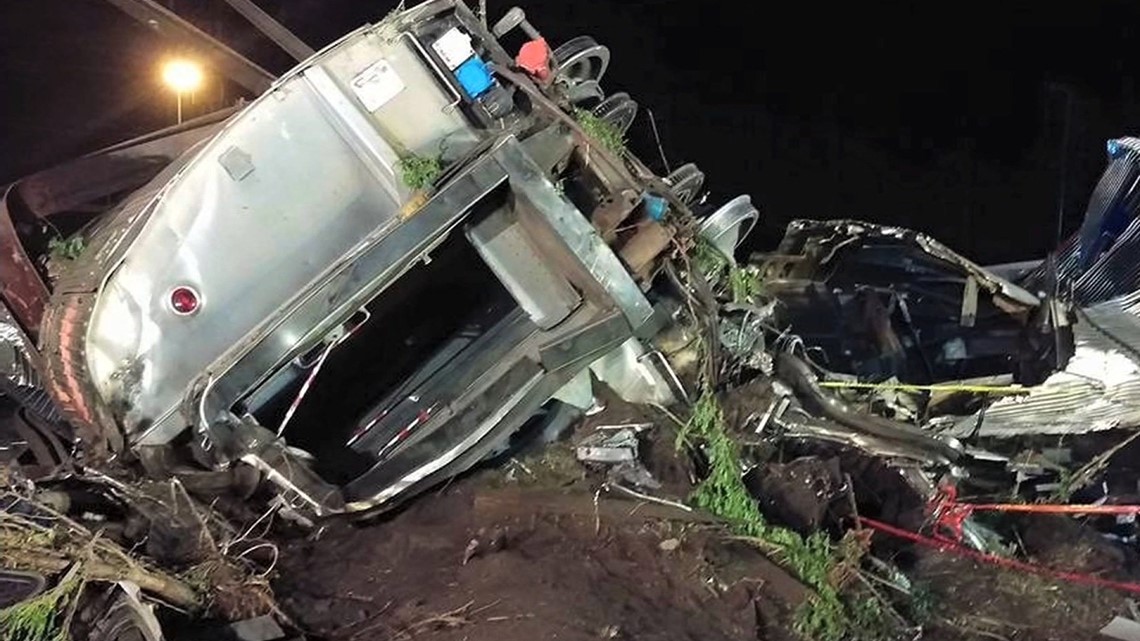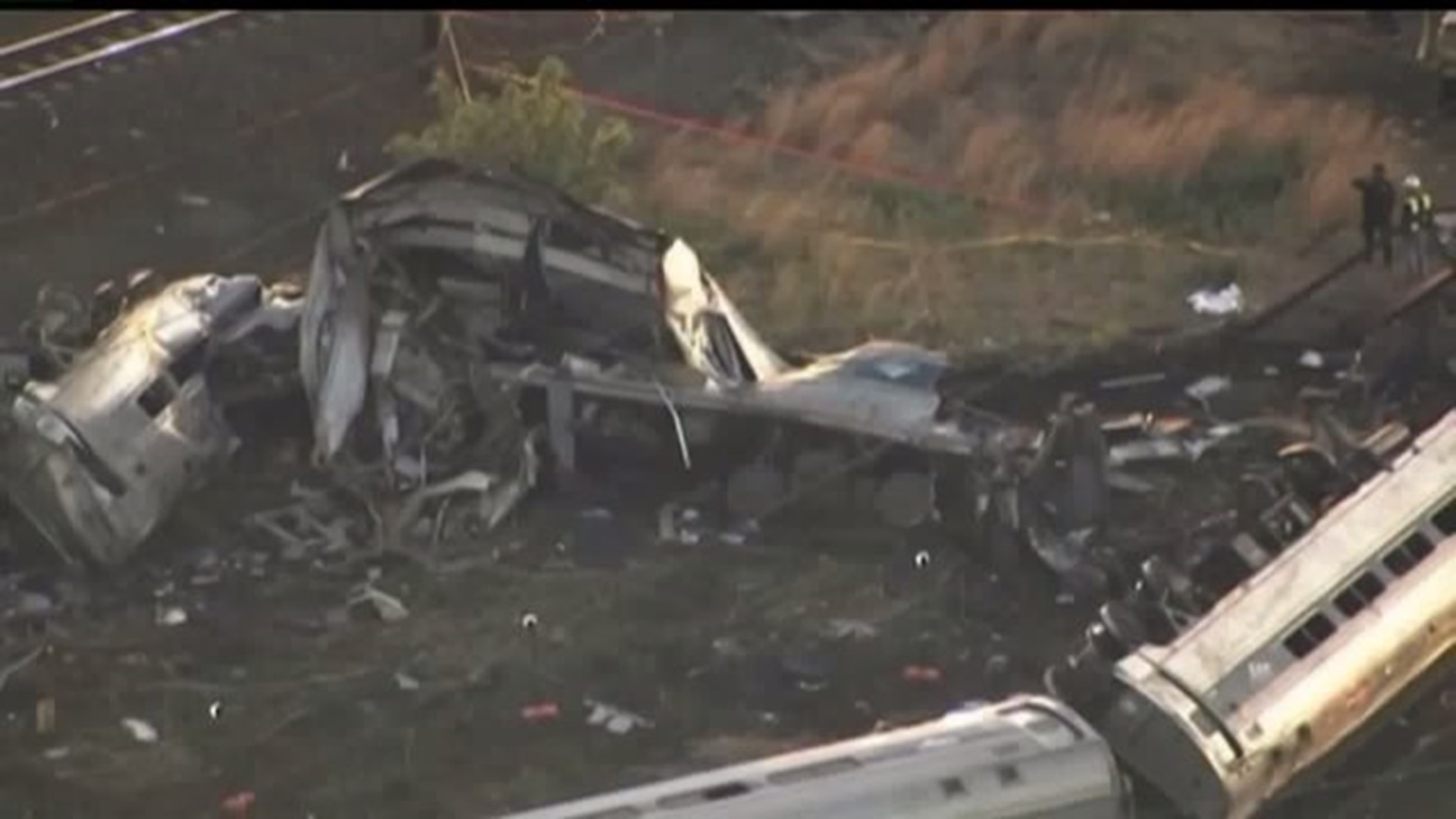PHILADELPHIA -- The stretch of track where an Amtrak train derailed Tuesday was not equipped with an automated speed control system called positive train control, Robert Sumwalt of the National Transportation Safety Board said Wednesday at a news conference.
"We feel that had such a system been installed in this section of track, this accident would not have occurred," he told reporters.
The engineer operating the Amtrak train that crashed applied full emergency brakes "just moments" before the train derailed, said Sumwalt. The train was traveling about 106 mph as it headed into a left turn where the maximum speed limit was 50 mph, he said.
Previous story
How do all seven cars and the engine of an Amtrak train jump the rails, sending passengers, luggage, laptops and more flying?
One possibility jumped ahead of all others Wednesday: Speed.
Authorities haven't said, definitively, what caused the derailment of Amtrak Northeast Regional Train 188 in Philadelphia on Tuesday night. But a source briefed by investigators said the train was believed to have been traveling in excess of 100 mph. That would be about twice the 50 mph speed limit for the curve it was in.
An official with direct knowledge of the investigation earlier said that authorities were focusing on speed as a possible cause, given the angles of the wreckage and type of damage to the cars. The recorder, or "black box," discovered at the scene could be pivotal by showing just that, former National Transportation Safety Board official John Goglia said.
Peter Goelz, also once a top NTSB figure and now a CNN analyst, predicted that a definitive conclusion could come soon.
"I'm afraid that this train might be going too fast for this turn," he said.


NTSB board member Robert Sumwalt has said only that his team will examine things like the condition of the track and the train, how the signals operated and "human performance."
Even if it's determined the train was going too fast, that could be due to the engineer or a mechanical issue, like faulty brakes.
"You have a lot of questions, we have a lot of questions," Sumwalt told reporters late Wednesday morning. "We intend to answer many of those questions in the next 24 to 48 hours."
Midshipman, AP staffer among the 6 dead
Whatever the cause, it doesn't change the suffering that many experienced Wednesday -- be they survivors dealing with physical and emotional trauma, or relatives of the six people killed after a few frenetic, horrific moments. Some 238 passengers and five crew members were on the train went it crashed around 9:30 p.m. Tuesday.
One of those who didn't make it was Jim Gaines, a father of two who worked as a video software architect for The Associated Press, his company said.
Another was a U.S. Naval Academy midshipman in full uniform heading home to New York on leave from the Annapolis, Maryland, school. A family member described 20-year-old Justin Zemser as a great person and genius whose death has left his parents "beside themselves."
Hospitals have treated more than 200 others, at least half of whom have been released. That figure includes eight in critical condition among the 25 wounded passengers at Temple University Hospital -- the closest trauma center to the crash site -- according to Herb Cushing, the hospital's medical director.
He said many passengers were injured when other passengers or objects fell on them. One of those hurt is the train's conductor, who received medical treatment and has briefed investigators, or will soon do so, Philadelphia Mayor Michael Nutter said.
Authorities have not ruled out the possibility of more victims at the crash site.
"We are heartbroken by what we've experienced here," Nutter said Wednesday morning. "We have not experienced anything like this in modern times."
'A lot of questions'


The miracle may be how some escaped relatively unscathed, given the severity of the derailment. A U.S. Department of Transportation representative told CNN that the engine and two cars were left standing upright, three cars were tipped on their sides, and one was nearly flipped over on its roof. The seventh one was "leaning hard."
"It is amazing," Nutter told CNN. "I saw some people last night literally walking off that train. I don't know how they did it."
The Washington-New York corridor is the busiest stretch for Amtrak nationwide. Hundreds of trains, carrying thousands of passengers, have made that trip in recent years, most of them rolling seamlessly from start to finish on a roughly 3½-hour journey.
That's what seemed to be happening Tuesday night, passenger Daniel Wetrin told CNN.
"Everything was normal," he said. "Then it was just chaos."
Jeremy Wladis was in the very last car, eating, when she noticed the train starting to do "funny things. And it gradually starts getting worse and worse."
Things started flying -- phones, laptops. "Then people."
"There were two people in the luggage rack above my head. Two women, catapulted (there)."
As she read a book in the second-to-last car, Janna D'Ambrisi said, she "felt like we were going a little too fast around a curve. The car she was in started to tip, and she was thrown onto another girl.
"People started to fall on us," she said. "I just held on to her leg and sort of bowed my head and I was kind of praying, 'Please make it stop.' "
Fortunately, D'Ambrisi's train car didn't tip over and she made it out safely. She credited many people -- including one fellow passenger who guided people with his shoes off -- for stepping up.
"Everyone was just trying to help the people who were injured, who had blood coming out of their head, their noses, to help them sit down in the dirt away from the rails," she said.
'Heavily used stretch of track'
The locomotive was built by Siemens and delivered to Amtrak in 2014 specifically for its Northeast Corridor service, a Siemens official said. That makes it fairly new, which doesn't rule out the train's condition playing a role in the crash but seemingly makes it less likely.
One factor that can't be discounted is where the crash happened.
"It's an extremely heavily used stretch of track," transportation analyst Matthew L. Wald said of the area. "They have trouble keeping it in a state of good repair."
The derailment was Amtrak's ninth this year alone, according to the Federal Railroad Administration, and while its cause has not yet been determined, some, like Wald, are already discussing the nation's aging rail infrastructure.
Noting President Barack Obama's commitment to upgrading the country's infrastructure, White House press secretary Josh Earnest said that the Obama administration is "hard at work" trying to figure out what caused the crash, and that their thoughts and prayers are with the families of everyone effected.
"Along the Northeast Corridor, Amtrak is a way of life for many," the President said later in a statement. "From Washington, D.C., and Philadelphia to New York City and Boston, this is a tragedy that touches us all."
Mayor: Some still not accounted for
For all this work to examine and address the causes of the crash, the immediate effect was on people -- whether they were on the ill-fated train, knew people who were or otherwise got caught up in the aftermath, including those stuck after Amtrak suspended service between Philadelphia and New York City.
Locations for passengers and their loved ones were set up in Philadelphia and at New York's Penn Station, where Red Cross regional CEO Josh Lockwood said about 100 people involved in the crash had come through by mid-morning.
Red Cross workers offered help dealing with the arriving passengers' physical and mental health, according to the aid group.
The fact that some have made it to their intended destinations is an obvious plus. But that wasn't true for everyone.
For one, dozens remain in Philadelphia-area hospitals. The fate of some is a mystery, with Nutter noting that not everyone on Amtrak's manifest has been accounted for. He didn't specify a number.
The missing include Rachel Jacobs, the CEO of the Philadelphia-based technology instructional company ApprenNet. Karl Okamoto, a friend and company co-founder, said that "Rachel left a meeting with the intent to board the train. As of (9:30 a.m.), no one has heard from her."
"Thank you for your thoughts & prayers for our CEO, Rachel Jacobs," the company later tweeted. "We are still looking for Rachel & hope she will be with her family soon."

